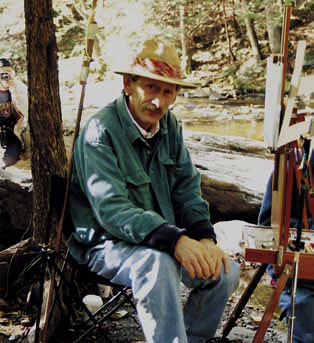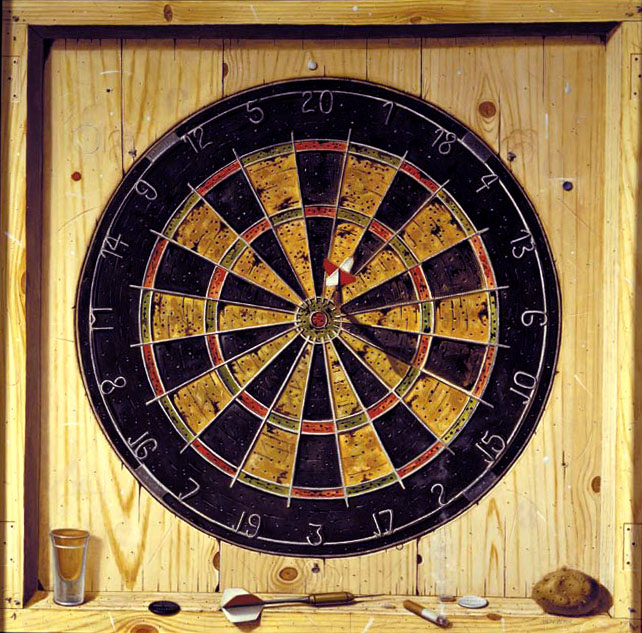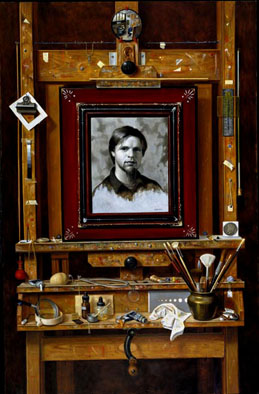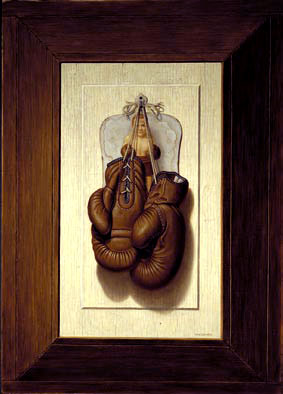|
Michael Molnar
|
|||||||||
|
Michael Molnar earned his Bachelor of Fine Arts degree from the Maryland Institute College of Art, where, from 1970 to 1975, he studied under Joseph Sheppard. A highly esteemed teacher, Sheppard communicated to students his acquired knowledge and expertise, and he showed respect for his students with positive comments and clear communication. Molnar knew the depth of experience that Sheppard possessed, and therefore he absorbed all he could from Sheppard. Although modern art was the trend at that time and realism was considered out of fashion, Molnar was more interested in the traditions of the old masters, which he felt were the foundation of art. He chose to study with Sheppard because he knew that Sheppard was also committed to these traditions, due to Maroger’s influence on him. Sheppard taught Molnar the principles of drawing, painting, anatomy, composition, and perspective and the importance of gleaning lessons through intense and ongoing study of the old masters. Molnar paints in the trompe l’oeil style. Trompe l’oeil is a French term, meaning, “deceive the eye,” and it is a style of painting that employs specific rules. For instance, the objects depicted must be actual size, viewed frontally, and placed on a defined space the background of the objects is part of the illusion. In trompe l’oeil painting, there also should be no evidence of brush strokes. Molnar feels that an artist is like an actor he has to entertain the viewers and leave them with an impression. Molnar engages viewers with artworks that are interactive. Two examples are Molnar’s “dartboard” and “chalkboard” paintings. The viewer stands in front of the painting and then tries to pick up a dart to throw at the picture or pick up a piece of chalk to leave a message. One of Molnar’s dartboard paintings was shown by the Salmagundi Club in New York, where it won Best in Show. When it was returned to him, he noticed what he thought was dust on the painting’s surface. Inspecting the canvas closely, he saw that there were 38 small holes in the painting. “To me,” Molnar said, “that was the ultimate compliment” (Legacy 2004). Molnar has been teaching for 30 years, passing on the lessons that Sheppard imparted to him. He feels that teaching is a responsibility and a positive link to the overall purpose of being an artist. He instills in his students a clear and thorough understanding of materials, art history, and the principles of drawing, painting, anatomy, and composition. Molnar has participated in numerous exhibitions, including Knickerbocker Artist, New York; Allied Artists of America, New York; Oil Painters of America, Parkridge, Illinois; Washington County Museum, Hagerstown, Maryland; the Midwest Museum of American Art, Elkhart, Indiana; the Butler Institute of American Art, Youngstown, Ohio; and the Phoenix Museum, Phoenix, Arizona. He has won many Best in Show awards, as well as other prizes. Reference The Legacy: a tradition lives on. 2004. Produced and directed by Joseph Sheppard. 35 min. Videocassette. |
 |
||||||||
 |
|||||||||
 |
|||||||||
|
English Darts, oil on panel, 24x24
|
|||||||||
 |
 |
||||||||
|
Make My Day, oil on panel, 29x20
|
|||||||||
|
Wow, oil on panel, 34x47
|
|||||||||